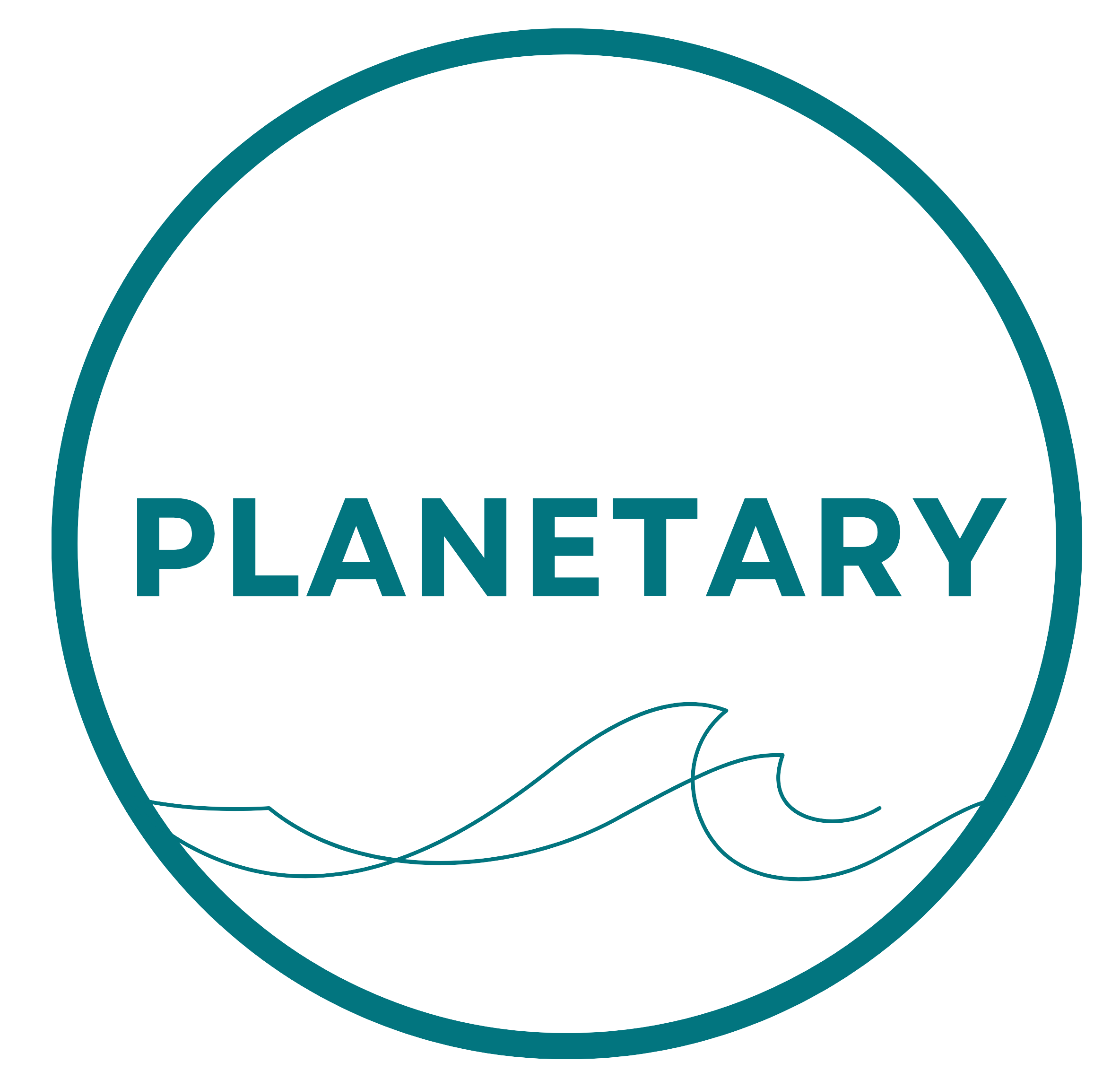The team at Planetary is happy to share resources to support community learning about anything that relates to our work.
Below is a list of topics and resources that we believe may be of interest.
Climate Change and the Ocean
The Ocean and Cryosphere in a Changing Climate
IPCC (Intergovernmental Panel on Climate Change). 2019.
A rigorous technical report focused on climate change’s interaction with oceans and the frozen regions of the Earth (ie: poles and high mountain ice caps). Details these regions’ role in the climate system, observed and projected changes in those regions due to climate change, the hazards those changes pose to human communities and ecosystem services, and potential human responses. The ocean section focuses on changes in temperature, heatwaves, sea level, sea ice, pH, primary production, CO2 uptake, and oxygen content.
How is Climate Change Impacting the World’s Ocean
United Nations. 2022.
A quick overview of the largest effects of climate change on the ocean and marine life.
Responding to Climate Change Around England’s Coast.
Ocean & Coastal Management. Sayers et al, 2022.
A paper investigating the technical challenges of protecting and transforming the English coast through to 2100, anticipating a global sea temperature rise of 2 to 4°C and resultant sea level rise and erosion. Examines both traditional and transformational measures of flood risk management for their adequacy and technical and political feasibility.
The North Atlantic Ocean and Climate Change in the UK and Northern Europe
Royal Meteorological Society. Wells, 2016.
An analysis of heat transportation mechanisms in the North Atlantic, particularly meridional overturning circulation (MOC), which produces a significant (9°C) warming effect on the oceans around the United Kingdom. Focuses on data taken from the RAPID monitoring array, a system deployed by international collaborating researchers in 2004. These measurements indicate that northward Atlantic heat transportation is weakening due to climate change.
How is Climate Change Affecting Coastal Flooding in the UK?
London School of Economics and Political Science. Ward, Kyriacou, 2021.
A brief explainer on the effects of sea level rise and increased erosion on the UK coastline and its inhabitants.
Climate Change Tracker
Data for Action Foundation.
Detailed, up to date data about current climate metrics and trajectories. Dashboard format.
Carbon Negative Hydrogen Production Countering the Effects of Ocean Acidification
Planetary Technologies, with funding by the UK Department for Energy Security and Net Zero and the Department for Business, Energy & Industrial Strategy. 2022.
This project was developed as part of a competition among groups developing novel Greenhouse Gas Removal (GGR) technologies. Phase One of Planetary’s project demonstrated a renewable method of hydrogen fuel production that could be combined with its OAE CDR process to both reduce the carbon intensity of its alkalinity purification and generate zero-emission fuel as a byproduct. Phase One also identified coastal sites in the UK with high potential for successful OAE projects.
Magnesium hydroxide addition reduces aqueous carbon dioxide in wastewater discharged to the ocean
Communications Earth & Environment
Dr Vassilis Kitidis, Senior Scientist at PML and the paper’s lead author, said:
“This pilot study successfully demonstrated the potential for using alkaline materials like magnesium hydroxide to enhance the ocean’s natural ability to absorb excess carbon dioxide from the atmosphere. We took a phased and gated approach to the project – examining all of the evidence to make sure the trial could be carried out safely at each stage. I’m excited by the results and how this science might now be taken forward sustainably – and alongside much-needed cuts in greenhouse gas emissions – for the benefit of society and the environment”.
Expand all
Marine Ecosystem Impacts of OAE
Seawater Alkalinity Enhancement with MH and its Implication for CDR
Marine Chemistry. Yang, Leonard, Langdon, 2023.
A scientific paper on OAE experiments conducted with Mg(OH)2 in wind-wave tanks. Results show successful CDR without alkalinity precipitation. Calculations indicate the process’s efficiency will vary based on water temperature, CO2 concentrations, and dissolved inorganic carbon levels, but that the OAE could remove tens of billions of tons of carbon from the atmosphere.
Atmospheric CO2 Removal by Alkalinity Enhancement in the North Sea
European Geosciences Union (EGU) General Assembly. Liu et al, 2023.
An abstract describing a model framework designed to simulate the carbon cycles in the North Sea and to predict the effects of alkalinity enhancement on the region’s chemical and biological systems.
The Potential Environmental Response to Increasing Ocean Alkalinity for Negative Emissions.
Mitigation and Adaptation Strategies for Global Change. Gore, Renforth, Perkins, 2019.
A scientific paper examining the impacts of alkalinity enhancement on one genus of red calcifying algae (Corallina spp.) in a lab setting. This experiment used Na2CO3, not Mg(OH)2 as its alkaline material. Increasing total alkalinity under these conditions did not significantly influence the algae’s productivity, respiration, or photophysiology.
Reversal of Ocean Acidification Enhances Net Coral Reef Calcification.
Nature. Albright et al, 2016.
A scientific paper examining the effects of alkalinity enrichment on coral reef communities. This paper quantifies net calcification in a natural (2016) coral community and compares it to a coral community in an increased-alkalinity ocean environment.
Saturation-State Sensitivity of Marine Bivalve Larvae to Ocean Acidification.
Nature Climate Change. Waldbusser et al, 2015.
A scientific paper determining that bivalve calcification and shell development is dependent on the carbon saturation of seawater, not only pCO2 or pH.
Biological Impacts of Enhanced Alkalinity in Carcinus maenas.
Marine Pollution Bulletin. Cripps et al, 2013.
A scientific paper investigating the effects of high-dose ocean alkalization on a crab species, Carcinus maenas. This study used Ca(OH)2 as its alkalizing agent, not Mg(OH)2. With acute exposure, all individual crabs experienced biological changes.
Coral Reef Calcifiers Buffer Their Response to Ocean Acidification Using Both Bicarbonate and Carbonate.
Royal Society – Biological Sciences. Comeau, Carpenter, Edmunds, 2013.
A scientific paper evaluating the effects of carbonate (CO32-) and bicarbonate (HCO3–) concentrations on calcification in two species: a coral and an algae. Both carbonate and bicarbonate levels affected calcification in both species, though the extent of its effects varied by light conditions and species.
Biological Impact of Ocean Alkalinity Enhancement of Magnesium Hydroxide on Marine Microalgae Using Bioassays Simulating Ship-Based Dispersion.
European Geosciences Union (EGU). Delacroix et al, 2023.
A study of three alkaline minerals with OAE potential and their biological effects on the microalgae Tetraselmis suecica. The Mg(OH)2 treatment was determined to have the lowest toxicity effect of the three minerals, producing no detectable effect on the growth of the algae, while the Ca(OH)2 treatment and NaOH treatments resulted in few to no surviving algae after the dispersion and regrowth phases.
Expand all
CDR: Background and Other Approaches
CDR Factsheet
IPCC (Intergovernmental Panel on Climate Change). 2022.
A two page graphical factsheet produced by the IPCC’s Working Group III to support the Sixth Assessment Report. The factsheet defines Carbon Dioxide Removal (CDR), describes its necessity as a mitigation tool, and provides a summary of several available CDR options, including their storage timescales, financial costs, and associated tradeoffs.
The State of CDR
Oxford’s Smith School of Enterprise and the Environment, Smith et al, 2022.
A report summarizing the current scientific understanding of Carbon Dioxide Removal (CDR) generally: its role in meeting global climate goals, potential roadblocks to responsible and scalable CDR deployment, and the categories and methods of CDR which are available and emerging.
A Research Strategy for Ocean-Based CDR and Sequestration
National Academies of Sciences, Engineering, and Medicine. 2021.
A consensus report assessing six ocean-based Carbon Dioxide Removal (CDR) strategies, including their risks, benefits, scaling potential, political and technical barriers to implementation, and knowledge gaps. The strategies discussed include: nutrient fertilization, artificial upwelling and downwelling, seaweed cultivation, recovery of marine ecosystems, ocean alkalinity enhancement, and electrochemical engineering approaches.


